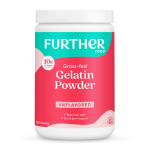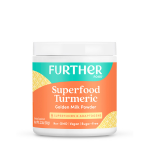|
WHAT IS THE KETOGENIC DIET? (aka THE KETO DIET)
Generally, the ketogenic diet consists of high fat, low carbohydrates and moderate protein intake. The goal of the ketogenic diet is to change your body’s energy source from glucose to fat, through a process called ketosis. Ketosis occurs when your body goes into “survival mode,” because your typical energy source (carbs, a.k.a glucose) is low, and instead, the liver produces ketones by breaking down fats. This results in your body using fat directly from fat sources in your body rather than converting glucose into fat. This leads to rapid weight loss, as well as other benefits described below.
Why low carb and moderate protein?
When you consume something that is high in carbs, your body produces two things: glucose, the molecule your body finds easiest to utilize as energy, and insulin, a hormone that controls your glucose levels. Insulin is what helps determine the movement of glucose within the body and whether the glucose is to be used immediately as a source of energy or stored as fat for future use.
In the standard American diet, we end up with a lot of glucose that our bodies aren’t capable of storing. So, what’s the problem with that, you ask? Well, something needs to be done about this extra glucose issue…sadly, the solution is that our body converts it right to fat. This leads to excess weight gain with extra fat, often in the stomach or hips.
The keto diet is based on the growingly popular premise that our bodies were actually made to run through burning fat as opposed to sugar. As we just discussed, we tend to have a lot of fat stored up already, so by achieving ketosis through a well planned ketogenic diet, we can begin using (burning) the fat we have stored. Our fat cells first release the stored up water they contain, then they head straight to the liver and out of our bodies as we lose both water weight and then the stored fat.
Don’t think that you need to starve yourself though to put your body into ketosis- you will be eating, just not many carbohydrates. In fact, the high fat and moderate protein that you eat on the keto diet help to keep you full and energized.
WHAT ARE THE BENEFITS OF A KETOGENIC DIET?
This was probably the section you were looking for! Why bother adapting a totally new diet without knowing how you’ll even benefit from it? Below are some of the rather amazing health benefits of pursuing a keto diet.
-
Weight loss. Lots of people turn to the keto diet in order to try to lose weight. Why does a keto diet seem to help so many with weight loss? It’s because on a keto diet, your body uses your own existing fat as its primary energy source! Studies have shown that the ketogenic diet is efficient in promoting weight loss by depleting your body of its stores of sugar and burning fat into energy. In fact, several studies have found that low-carb diets tend to be more effective than low-fat diets when it comes to weight loss. One study conducted by a group of medical doctors and dietitians tested a low-carb diet versus a low-fat diet in 30 overweight young adults. The low-carb group lost more than twice the amount than the low-fat group: about 22 pounds versus nine (3).
-
Improve your mental performance. This may be a surprise to you, but plenty of people have turned to the ketogenic diet just for this specific benefit. Ketones can help your brain by providing substrates (cholesterol) that help to repair damaged membranes and neurons in our brains. This can help in improving memory, concentration and ability to focus. (4) You may also experience brain cell growth and reduced inflammation.
-
Long-term boost in energy and reduced hunger. While on a keto diet, you’re giving your body a more reliable and effective main energy source – fat – and that’s why you may feel more energized throughout the day! Additionally, fats are more filling and can keep you feeling satiated for a long period of time, helping to minimize the blood sugar crash that often occurs from eating too many carbs. Reduced cravings means less binging and the potential for more weight loss while sticking to a keto diet!
-
Balanced blood sugar levels and insulin levels. Since you are eating a low-carb (consequently meaning low sugar) diet, you may be reducing the likelihood of prediabetes or diabetes. And for those who are already either pre-diabetic or already have Type II diabetes, low carb intake can additionally help you reduce insulin as well, yet another bonus for those who may be susceptible to Type II diabetes.
-
Skin benefits. The low-carb and low-sugar keto diet can reduce inflammation in your skin and can improve the appearance of your skin. In 2007, a 12-week study of 43 male patients showed that people with higher carb intake are more likely to develop acne (1). By reducing carbs, particularly from processed foods or refined sugars, you can help minimize acne breakouts and other skin issues.
-
Improved cholesterol levels. As you may have heard, there is “good cholesterol,” which is scientifically titled HDL (high-density lipoproteins), and then there is “bad” cholesterol, LDL (low-density lipoproteins). HDL provides benefits to our bodies by transporting cholesterol to either be recycled or destroyed, preventing detrimental cholesterol buildup in the arteries. The high fat keto diet helps to increase your HDL levels (good cholesterol) and decrease the concentration of your LDL levels. This is exactly what you want to reduce your risk for heart disease.
-
Can be useful in treating epilepsy. In fact, the ketogenic diet has been used since the 19th century to do just that, thanks to Dr. Russell Wilder of the Mayo Clinic. The high-fat, low-carb diet has been shown to reduce the prevalence of seizures experienced by those who suffer from epilepsy, especially children. This benefit is linked to the ketogenic diet’s aid in improving brain function. In 1998, the Journal of Pediatrics published a study reporting that one-third of the 150 epileptic children studied had a 90% reduction in seizures when on the keto diet (2).
WHAT TO EAT AND NOT EAT ON THE KETO DIET
Basically, a ketogenic diet requires you to eat foods high in fat but low in carbs and moderate levels of protein. Foods rich with carbohydrates are some of the most difficult ones to avoid, so it’s important to stick to your diet plan in order to steadily reduce your cravings. It may be a surprise to some people, but carbohydrates are found in both junk foods and healthy foods – make sure you know what foods are high carb. Do not assume! Otherwise you may be confused why you’re body isn’t entering a state of ketosis. You won’t be able to reap the benefits of the ketogenic diet if you aren’t applying it correctly.
Your general diet should look like this: 70-80 percent of consumed calories should be fat, 15-20 percent protein, and 5 percent carbs. Generally, you should limit your carbs to about 30g a day. This diet should be followed daily and consistently. Don’t confuse your body with cheat days and sudden spikes in carb intake!
WHAT KETO FOODS TO EAT
-
Protein: The ketogenic diet calls for about 15-20% of your daily diet to consist of protein (that’s about x grams). Eating too much protein will just add to your glucose levels, and that is the opposite of what the ketogenic diet calls for.
- Go for grass fed and pasture raised meat as often as you can.
- Fish and seafood, in particular fatty fish like salmon. Just remember, try to avoid breading your meat because that will just add carbs to your meal. Grilling, roasting or sauteing are great ways to prepare your meat or fish.
- Eggs; you cook them in so many different ways.
-
Collagen or Gelatin: Grass fed collagen or gelatin such as Further Food Collagen can give you an extra protein boost. You can mix it in to any drink or any recipe without added taste.
-
Non-Starchy Vegetables – These include vegetables that grow above the ground – fresh or frozen. Leafy and green vegetables are high in nutrients, and they’re a great gateway for adding fats if you toss them in oil or butter! Some good options include lettuce, broccoli, spinach, cauliflower, and cabbage.
-
Healthy Fats: Coconut oil is rich with medium-chain triglycerides (MCTs) that get quickly converted into ketones. Olive oil is heart-healthy and contains zero carbohydrates. Additionally, dairy products such as butter, cheese and yogurt are encouraged. Go for the full fat versions and make sure to check that there are no added sugars in the yogurts.
-
Nuts and Seeds – While nuts and seeds do have some carbs, they make for great fat intake, while also being heart-healthy. Keep your servings small, however since nuts are high in calories. A bit less than a handful is usually the best judgment call. Examples include macadamia nuts, almonds and brazil nuts.
-
Berries – While most fruits should be eaten rarely because they are high in sugar and carbs, berries are an exception in the fruit food group. This is because berries are surprisingly low in carbohydrates and packed with fiber and antioxidants. Enjoy all types of berries, including raspberries, blackberries, strawberries, and blueberries.
WHAT FOODS TO AVOID/LIMIT
Here are a list of foods you should avoid or limit on the keto diet. It may be difficult at first, but you will get used to it. The health benefits you get from the keto diet will encourage you to keep going!
-
Sugar – You may have guessed this one way before even knowing about ketogenic diets, because cutting out sugar is suggested in virtually all diet plans. Too much sugar can lead to weight gain and a whole host of chronic illnesses. And especially when on the keto diet, you want to eliminate as much sugar as possible-remember the goal is to burn fat, not sugar from glucose. Cutting out processed foods and reading labels for added sugars is a must.
-
Fruits – Besides berries, fruits should be eaten sparingly. Large fruits are particularly high in sugar, as are many fruit smoothies.
-
Starchy vegetables – Starchy vegetables have an abundance of carbohydrates (and tend to be higher in calories). This includes potatoes (both white and sweet), corn, legumes and beans,
-
Grains – Yep, we know this is a tough one. All grains and foods made from grains ought to be avoided if you want to successfully take on the keto diet. Grains contains too many carbs and will interfere with your ability to enter ketosis. That includes whole grains, quinoa, buckwheat, pasta and rice.
-
Beans and Legumes – For the same reason, beans and legumes are to be avoided; high starchy foods are a big no no for the ketogenic diet.They are also pretty low in fat, so they won’t be contributing much to your fat intake. This includes black beans, chickpeas, lentils, etc.
-
Alcohol – This one is quite obvious and pretty much something to limit, especially if you are trying to lose weight. However, if you’re going to continue drinking alcohol every now and then, it’s actually suggested to choose hard liquor (which has no carbs) over beer or wine. Just make sure not to mix the alcohol with sugary syrups or other sweetened mix-ins.
The biggest advice for knowing what to avoid eating is to research, research, research. Always read labels! Those numbers truly matter. Processed and packaged foods need extra attention. Always know where your food is coming from and what is it composed of. Pay attention to fat, carbohydrates, and sugar!
HOW TO TELL IF YOU’RE IN KETOSIS
Since the goal is to be in ketosis, the important questions is how do you know if you’re in ketosis? Look out for these indicators (not in any particular order):
-
You may have bad breath. Unfortunately, a ketogenic diet can cause some temporary bad breath due to the presence of acetone. However, this condition should go away over time (thankfully).
-
You may have a smaller appetite and more energy. This is a pretty great one to notice. Once you get through the dreaded “keto flu,” which is simply your body’s term of adapting to this big change in diet, your hunger levels may lower without causing you to feel weak!
-
You may urinate more often. This is a typical condition that comes from healthy eating – after all, urination allows the body to get rid of more toxins, so even if it may be an inconvenience, it’s doing your body good.
-
Your mouth may feel dry. Dry mouth isn’t fun and is usually correlated with an increase in thirst. Just be sure to keep yourself well hydrated, and don’t forget to keep up with your intake of electrolytes too!
HOW TO MEASURE KETONE LEVELS
There are additional ways to help determine if you’re in a state of ketosis, though they’re not always perfect and require you to spend money, but they may be worth it to make sure your body is in ketosis. Here are three common methods that require direct measuring:
-
Urine sticks. These are also very simple to use. Go to the bathroom and urinate onto the sticks for several seconds. Within seconds, the stick should change color if you are in ketosis. The packaging should explain what the colors indicate. This method is the cheapest, though its accuracy is not always precise. Results change based on how long you’ve been in ketosis as well as your current level of hydration. You can find urine sticks pretty easily – check out your local pharmacy!
-
Blood ketone meter. If you can’t tell by the name, this method will require you to prick your finger to draw a little bit of blood at every reading – squeamish friends, this may not be the one for you (but don’t worry, look at the other options!). Blood tests are usually better in accuracy for measuring many things, and the same goes for ketosis levels. At around $1 a strip, blood ketone meters are exact in telling you the current level of ketone in your bloodstream. Of course, with all tests, accuracy may waver depending on the actual device you purchased and the strips themselves, so be sure to be mindful when measuring.
-
Breath ketone meter. This method is probably better for people who are further into their ketogenic journey due to the cost (around $200). Breath ketone meters are easy to use – plug it into a USB on your computer and then blow into it! The device can measure the amount of acetate your breath contains. It’s expensive, but it’s also a reusable device, unlike blood ketone strips. Keep that in mind!
Don’t expect ketosis to happen overnight, or even over the course of a few weeks. No, your body takes a while before becoming completely keto-adapted. This may take from two weeks to eight weeks, depending on you and your implementation of the diet. Remember, your body is undergoing a major change. Transitioning from glucose as your main fuel source to fat is a major change. Give your body time – it’s worth the wait!
POTENTIAL “SIDE EFFECTS” FROM THE KETO DIET – THE “KETO FLU”
Like any change in lifestyle, you may experience some side effects in the first several weeks or months of adapting the ketogenic diet. A combination of any of the following effects are what people call the “keto flu.” Several of the side effects are simply due to your body adjusting to the new diet and primary energy source – time will treat them, so don’t worry too much about those. If the side effects continue over time, however, ask a keto expert for help.
Two important ways you can avoid/minimize side effects:
1. Drink Lots of Water:
Note that many of the side effects stem from people not drinking enough water or not consuming enough of the proper nutrients. Make sure you’re hydrating with plenty of water – we recommend almost a gallon a day! This may seem like a lot, but if you spread your water intake throughout the day, you can reach the amount necessary to function properly and hopefully prevent some side effects.
2. Add Salt To Your Food:
When you start cutting out the carbs on the keto diet, as you start to reduce glycogen stores, you will start shedding a lot of water (hence the frequent urination). This also results in a loss of salt, so you need to make sure to replace both the water and salt.
COMMON, MANAGEABLE SIDE EFFECTS OF THE KETO DIET
| SIDE EFFECT |
HOW TO PREVENT/TREAT |
| Constipation: Your digestive system will need some time to adjust to your new diet. |
- Increase fiber intake – Eat more non-starchy veggies, salt, and water
- Reduce dairy consumption
|
| Muscle Cramps: This can come from loss of minerals when you first start the diet. |
- Increase water and salt intake
- Consider supplementing with magnesium supplement
|
| Heart Palpitations: |
- Increase fluid and salt intake
- Consider potassium supplement or multivitamin with zinc and magnesium
|
| Headaches |
- Increase potassium intake
- Increase water and salt intake
- Consider magnesium citrate supplement before bed
|
| Frequent Urination: This is how your body releases the stored glucose in your liver and muscles |
- Eventually, this will settle down as your body gets used to your new diet.
|
| Sugar Cravings |
- Eventually the cravings will get better. Consider doing a sugar detox such as the Further Food 7 Day Sugar Detox Challenge to help you get through the first few days.
|
| Trouble Sleeping: |
- Have a light snack before bed containing some protein and carbs.\
- Consume more veggies and less histamines (eggs, cheeses, bacon, etc.).
|
*All supplements mentioned should be approved by a medical professional before taking.
If there’s anything to be truly concerned about, it’s ketoacidosis, but even that is very rare. This is what happens when ketone production is too high, but getting close to that condition is highly unlikely.
Note: If you have any pre-existing conditions or are currently taking a medication or have a medical condition that may be affected by the ketogenic diet, such as Type I diabetes, we recommend that you consult a doctor or work with an experienced keto expert. Additionally, if you have any concerns about any symptom or side effect, we always recommend checking with your doctor.
ADVICE FOR BEGINNERS OF THE KETOGENIC DIET
So you have decided to try out the ketogenic diet. Congratulations! We would like to personally offer you some lasting advice as you begin changing your eating habits.
-
-
Write down what you eat and when. This method is actually helpful for any diet, because it makes you be aware of exactly what you’re putting into your body. Noting when you eat can be helpful as well since it allows you to track how you feel in relation to what and when you eat.
-
Be strict. People are more prone to breaking their diets if they allow themselves to take on cheat days. If you really want to give the keto diet a try, make a commitment not to cheat. Otherwise, it will take a very long time to reach ketosis otherwise.
-
Clean out your pantry as soon as possible! Cravings will be hard in the beginning to cope with, so you have to ensure that it isn’t too easy to cheat. Remove foods that you can’t eat. If you’re trying to avoid sugar, but your cabinets are packed with bagels and processed cookies, it’s going to be especially difficult to do so if you’re surrounded by it!
-
Restock your pantry with foods that complement the diet. Remember, you are not starving yourself. To make sure you’re getting the nutrition you need, you’ve got to get in the habit of purchasing foods that will balance out properly in your new diet. Buy the right vegetables, meat, etc.
-
Meal Prep is essential. Plan your meals in advance and use the weekends to cook large batches of food that you can easily reach for during the week.
-
Stay hydrated and salt your food. Drink close to a gallon of water a day. We know we already mentioned the importance of drinking water and salting food, but we want to reiterate it here again. Water can prevent some of those nasty side effects, and it’s something you should always be drinking regardless of your diet. Also, sodium is key in water retention and getting electrolytes back in your system. You are more than welcome to go a little crazy with salt.
-
Don’t forget to exercise! Yes, the diet is great, but it’s always best to implement an exercise routine so that you can truly get the most out of the ketogenic diet.
-
Be patient: The keto diet is a major transformation in how you eat. It will take time for your body and you to become adjusted to it. Just because you experience some of the side effects described above, doesn’t mean you should give up or that the keto diet isn’t for you. This will take time.
-
Believe in yourself. How are you going to thrive on this new diet if you don’t think you can get results? Your mindset can and will affect how you approach your diet, so dive in with positivity and continue to encourage yourself. Don’t let the number on the scale define you.
EASY KETO RECIPES
Of course we couldn’t leave you without offering some incredible keto-friendly recipes from our team! It can be really hard starting out, but having a strict diet doesn’t mean it won’t be tasty! Check out these recipes:
TREATS / BEVERAGES
Keto Dark Chocolate Coconut Bars
10-Min Prep Time | 90-Min Cook Time | 10 Servings | 15g Total Fat
https://www.furtherfood.com/recipe/keto-dark-chocolate-coconut-bars-healthy-snack-ketogenic-diet-stevia/
Keto Avocado Protein Smoothie
2-Min Prep Time | 0-Min Cook Time | 2 Servings | 11g Total Fat
https://www.furtherfood.com/recipe/shamrock-shake-collagen-avocado-mint-healthy-dessert-high-fiber-low-carb/
Keto Bulletproof Collagen Coffee
5-Min Prep Time | 4-Min Cook Time | 1 Serving | 19g Total Fat
Orange Keto Bombs
2-Min Prep Time | 60-Min Cook Time | 8 Servings | 13g Total Fat
https://www.furtherfood.com/recipe/orange-keto-bombs-ketogenic-snack-mct-oil/
MEALS
Chicken Wings with Tandoori Coconut Milk Marinade
10-Min Prep Time | 40-Min Cook Time | 3 Servings | 45g Total Fat
https://www.furtherfood.com/recipe/chicken-wings-with-tandoori-coconut-milk-marinade-turmeric-garam-masala-hashimotos-diet-thyroid-health-recipe/
Pecan Crusted Salmon
5-Min Prep Time | 15-Min Cook Time | 2 Servings | 37g Total Fat
https://www.furtherfood.com/recipe/pecan-crusted-salmon-gluten-free-paleo/
Simple Sriracha Shrimp and Avocado Salad
10-Min Prep Time | 0-Min Cook Time | 2 Servings | 33g Total Fat
https://www.furtherfood.com/recipe/simple-sriracha-shrimp-and-avocado-salad-gluten-free-dairy-free-diet/
Mini Bacon Wrapped Meatloaf
10-Min Prep Time | 30-Min Cook Time | 8 Servings | 10g Total Fat
https://www.furtherfood.com/recipe/mini-bacon-wrapped-meatloaf-paleo-whole-30-gluten-free-dairy-free-sausage-paleo/
REFERENCES:
- https://www.ncbi.nlm.nih.gov/pubmed/17448569
- https://www.ncbi.nlm.nih.gov/pubmed/9832569
- https://www.sciencedirect.com/science/article/pii/S0022347602402065
-
Keto Adapted: Your Guide To Accelerated Weight Loss and Healthy Healing, by Maria Emmerich
Get an easy keto protein boost with Further Food Collagen Peptides!
Want to Read More?
Ketogenic Diet Explained: What Happens When You Eat Too Many Carbs
Ketogenic Diet Explained: Why You Can’t Have Cheat Days on a Keto Diet
Ketogenic Diet Explained: 9 Myths About the Ketogenic Diet Debunked by Nutritionist Maria Emmerich
|

























